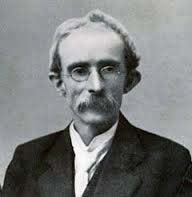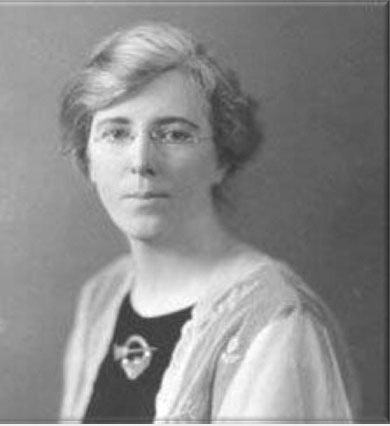On 3 May 1916, the future of Ireland was decided. It was the day that the executions of the latest generation of patriots began with the deaths of Padraic Pearse, Tom Clarke and Thomas McDonagh. What made it different from the deaths of Tone, Emmet and other patriots was Thomas James Clarke and his wife Kathleen.

For Thomas J. Clarke it all began when he was raised in Dungannon, Co. Tyrone and joined the Irish Republican Brotherhood (IRB) at age 20. As a result of his membership he suffered a 15-year imprisonment so brutal that two of his fellow inmates went insane. To maintain his sanity Tom learned shorthand (a system devised by Dubliner John Gregg) and transcribed the entire Bible – both old and new testaments – as mental exercise. In 1898, the physically inhumane conditions he’d endured were verified and he was paroled. He went to recuperate at the home of a fellow prisoner, John Daly, released years earlier. It was there that he met and fell in love with Daly’s niece, Kathleen. Tom eventually left for New York and Katty, as he fondly called her, followed and they wed in 1901. He was hired by The Gaelic American newspaper published by John Devoy, the head of Clan na Gael – the American branch of the IRB. When Tom realized that a coming European war would involve England, he saw an opportunity to strike for Irish freedom. He decided to return to Ireland and reorganize the dormant IRB. In 1908, the Clarkes returned to Ireland and Tom opened a tobacco shop in Dublin which became a center of nationalist activity. He joined the IRB Supreme Council and replaced the docile older members with younger, militant thinkers. He placed IRB men in leadership positions in other Irish organizations from the Gaelic League and the Gaelic Athletic Association to the Irish Volunteers in order to control, consolidate, and encourage nationalist sentiment. He brought Pearse, Connolly and other leaders into a military committee to organize a nationwide rising, he arranged for the purchase of arms and when he was finally ready, he notified John Devoy that a revolution was set for Easter Sunday, 1916. When Volunteer Chief Eoin MacNeill learned of a failed delivery of arms in Kerry, he cancelled the Rising, but the nationalist momentum that Clarke had created was too well established to falter. Despite the cancellation, the rising was rescheduled for Easter Monday. It was not the well-planned rising that Clarke had envisioned, but a more courageous one since hope had vanished for support on a national scale. Following his dream, Tom Clarke proudly placed his name in the primary position on the Proclamation of an Irish Republic and marched off to challenge the right of the British to be in his country. Within a month, he would be dead – the victim of a British firing squad. Yet his death and the deaths of the other leaders, so enraged the Irish people in its severity, that they took up arms and fought a war of independence with Tom Clarke as their inspiration. The Easter Monday insurrection was the Bunker Hill of Irish history for, though it was unsuccessful, it sparked a struggle that never ceased until Ireland realized freedom. Devoy claimed that “but for him there would have been no IRB left in Ireland and no fight in 1916.”

For Kathleen Daly Clarke it all began for her when her uncle John was released from prison. Daughter of a nationalist family, she listened intently to her uncle’s stories praising the courage of a fellow prisoner, Tom Clarke, and though Tom was 20 years her senior she knew the man she wanted to marry. It was only after Clarke was released and came to the Daly home to recuperate that her uncle realized the awe in which young Kathleen held his old friend and that was revealed at years’ end when they announced their engagement. Tom left for New York in 1900, joined Clan na Gael and went to work for John Devoy. Kathleen joined him and they married on 16 July 1901 after which they settled in the Bronx. A year later, they moved to Brooklyn and eventually bought a farm in Manorville, Long Island. As war between England and Germany neared, Tom and other ranking members of the Clan agreed that Ireland’s day of liberation was at hand. Tom wanted to return and reorganize the ailing IRB, but Katty wouldn’t hear of it. She recalled the frail figure that limped into her Limerick home in 1898 nearly dead from mistreatment. She pleaded that he had done as much as any man could do for his country and reminded him that as a parolee, he was still subject to arrest. Tom reminded her of the premature death of her father, the torture endured by her uncle and the grief imposed on her mother and grandmother by the cruel alien force in their homeland. In his own persuasive way, Tom fanned the smoldering fire of her nationalist soul and rekindled her passion for Ireland. Together, they sailed for Ireland and into the pages of Irish history. What happened next was too perfect not to have had some divine intervention.
Kathleen’s strong nationalist sentiment made her an invaluable partner to Tom’s organizing activities. Together, they revived the IRB nationalist newspaper Irish Freedom and, as Tom organized the men of Ireland, Kathleen joined the Daughters of Ireland and became a founder of Cumann na mBan – the ladies auxiliary to the Irish Volunteers. As evidence of IRB confidence in her, as the date of the Rising drew near, the Supreme Council chose Kathleen to safeguard their plans and assets. If they were arrested, she was to use them to continue the dream with a new leader whom she was to choose. After the flag of an Irish Republic flew over Dublin for 6 days, the leaders voted to surrender to save the growing number of civilians casualties from indiscriminate British shelling; the only one to vote no was Clarke and he broke down sobbing when outvoted. After surrender, the patriots were held overnight on Rotunda Garden. Clarke was recognized by British Captain Lea-Wilson who had him stood erect and stripped naked before an on-looking public while verbally abusing the 58-year old as a sad example of Irish manhood. An enraged Michael Collins, also on the lawn, made a point of locating Lea-Wilson in Wexford in 1920 and had him shot dead! The leaders were sentenced to be executed, Kathleen’s husband and brother, Ned Daly, among them. On her last visit to Tom in prison, to avoid depressing him further, she bravely withheld the news that she was pregnant; she later miscarried. After the leaders were murdered and their followers imprisoned, Martial Law was imposed nationwide. Ireland faced the same brutality imposed after the United Irishmen Rising of 1798 that successfully squashed nationalism for generations. Yet this time the Brits hadn’t reckoned on Kathleen Daly Clarke! She had the funds and assets entrusted to her by the IRB along with a list of trusted local nationalist leaders around Ireland. When the leader’s destiny turned out to be the ultimate sacrifice, it fired the fury of the Irish nation and Kathleen was waiting to lead them to the final victory with the tools that Tom had fashioned. The first thing she did was to set up Prisoners Dependent’s Fund offices around the country to care for the families of those interned after the Rising. Later when public pressure forced the release of the internees; those offices were used to help settle returning prisoners. Then, Kathleen chose the new nationalist leader ─ his name was Michael Collins! When she turned over the funds and assets to Collins, her national network of offices became recruiting centers to reorganize a national liberation force and in January 1919, a War of Independence began.
All through that action and into the years of the Irish Free State and the Republic of Ireland, Kathleen Daly Clarke served her country as no woman ever had. She was one of four women elected into the Sinn Fein executive in 1917 and in May 1918, was arrested with Countess Markievicz, Hanna Sheehy-Skeffington and Maude Gonne MacBride. In late 1919 after her release, she became a successful candidate in local government and in 1921 was elected a member of the second Dail (Irish Parliament). She was also elected to the third Dail in 1925 and then was elected as Senator of the Upper House where she devoted much of her work to opposing Eamon deValera’s policies relegating women to menial positions. In 1939 she became the first female Lord Mayor of Dublin and her first act was to remover the picture of Queen Victoria that had been hanging in the Mansion House for years saying that she could not sleep in a house with that woman in it! Further, at the swearing-in ceremony, she refused the Mayoral Chain of Office since it had been presented to the city in 1698 by King William of Orange. After a long career of service to Ireland, she retired in 1941, living the rest of her life in peace until she joined Tom in 1972.
Memorials were erected and sites dedicated to 15 of the 16 executed leaders of the Easter Rising, but Kathleen was adamant that no money be put into brick and mortar in Tom’s name as long as there were hungry citizens in Dublin. However, in 1954 a memorial to three leaders of the 1916 rising was erected at Sarsfield Bridge in Limerick depicting men significant to that county. Beside a figure of Mother Ireland stands Limerick-born Ned Daly and Con Colbert along with Tom Clarke who married a Limerick lady. It was the first statue of Tom Clarke in all of Ireland and depicts him holding a rifle for his part in the rising. In 1987, a Suffolk County, NY AOH Historian’s Committee funded and erected an obelisk of Wicklow granite at the former Clarke home-site in Manorville. Sam O’Reilly, Easter Rising veteran and Tom Clarke’s friend, was invited to lay a wreath at the dedication ceremony and he told this historian, Tom would have like this; that made it all worthwhile. In 1996 Kathleen’s name was added to the obelisk. On Sunday, 1 May 2016, Dungannon’s Tom Clarke 1916 Club and the Tom Clarke GAA Club unveiled a statue of Tom. It is only the second statue of him in all of Ireland and it depicts him with a pen in hand memorializing the moment after he became the first to sign the proclamation of the Irish Republic. Then, on 3 May 2016, on the centennial of his death, a bridge in Dublin was renamed the Thomas J Clarke Memorial Bridge. In 2018, the Tyrone AOH awarded a proclamation of thanks to the Suffolk AOH for erecting the Manorville Memorial. Tom and Kathleen Clarke were an inspired as well as inspirational couple. They prepared a whole generation of Irish for liberty and guided them through its fulfillment. In no other nation’s history can one find a husband and wife team so actively devoted to the goal of freedom.